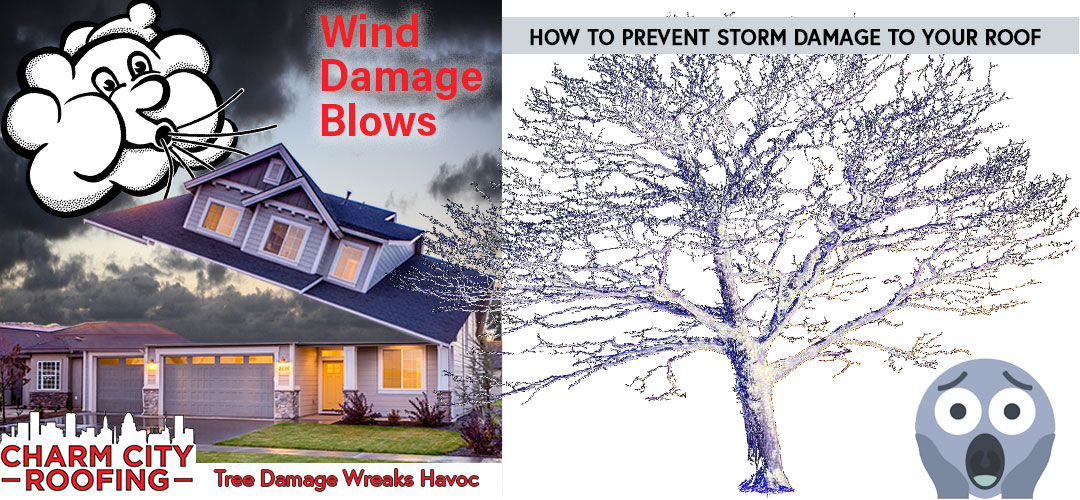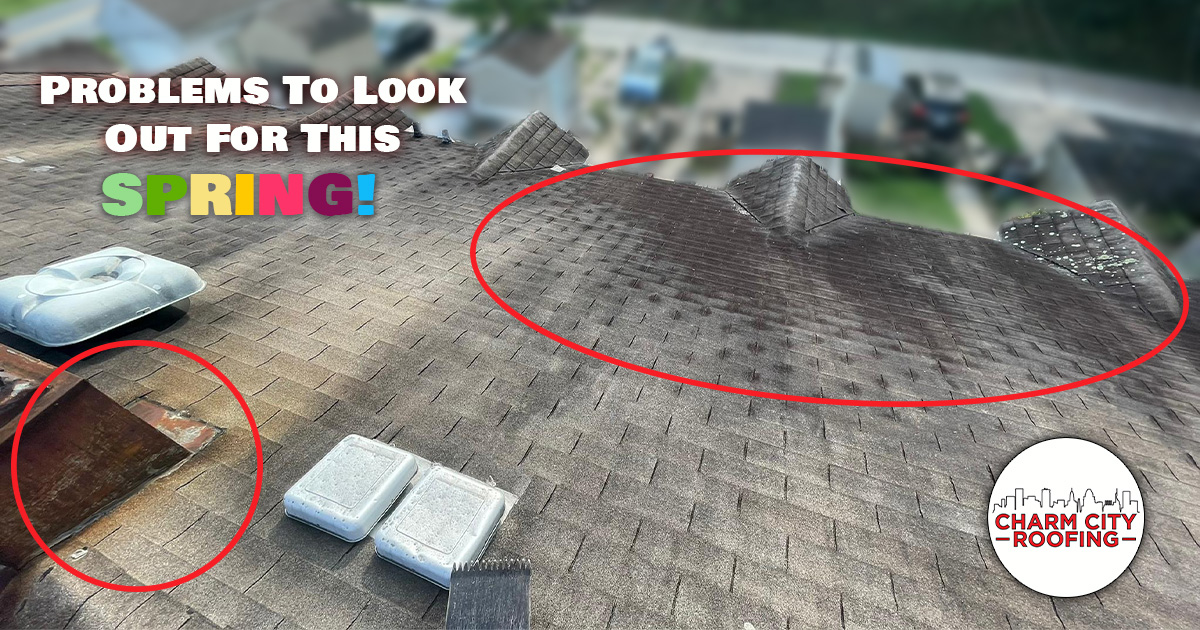
Roofing Problems To Look Out For In Spring
Roofing Problems To Look Out For In Spring
This time of year, roofing problems have a way of springing up.
Homeowners everywhere are finding fresh leaks and water damage as the weather starts to warm up. There’s a good reason for this; winter storms and freezing temperatures take a disproportionately large toll on a roofing system. After months of snow, hail, and wind, many roofs develop weaknesses in their watertight layers.
This damage leads immediately to leaks and water damage when things start to warm up and the ice thaws. Identifying these problems early is crucial for homeowners who want to minimize damage and keep their roof in top condition. As winter retreats and spring moves in, make sure to check your roof for signs of these common problems.
Common Spring-time Roofing Problems:
Sealant Failures
Ever curled up for extra warmth when the weather gets nippy? Many building materials behave the same way. Caulk and other sealants contract in the cold winter weather and expand on warm days.
The effect is very subtle, but over time it can cause sealant to warp and crack. This allows water to creep under the sealant. This water expands as it freezes, further widening any small cracks or warps in the sealant. Eventually, this freezing and thawing process can create enough space to allow water to pass through your sealant. It can then run underneath the aluminum flashing of your home, resulting in water damage.
Sealant damage isn’t always easy to spot, either. Unlike a missing shingle or a sagging soft spot, a cracked seal can be invisible to untrained observers. Anyone who isn’t closely investigating the roof’s structure can miss the signs of damaged sealant. Getting a professional inspection is the best way to assess whether your sealant has begun to fail.
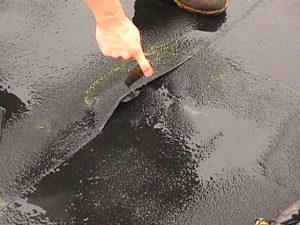
Flat Roof Seam Failure
Trapped Moisture
We all love watching piles of snow build up from the comfort of a warm home. However, the combination of heavy snowfall and a roaring fireplace can be harmful to your roof.
The warm air from your heaters rises to the highest parts of your home. If it makes its way into the attic, the bottom layer of snow on your roof will melt slightly. The surface layers of snow stay intact, however, creating an insulated environment that traps moisture against your roof.
In the worst case, this trapped moisture can persist for weeks or even months, causing rot, leaks, and other deterioration. Again, freezing and thawing can be an issue, expanding weaknesses in shingles, flashing, or torch-down membrane. Sometimes sticks, leaves, or other organic debris become trapped under the snow, too, causing even more moisture to gather.
When spring finally comes, the problematic snow melts away, but the damage from the trapped moisture remains. It’s a good idea to carefully check areas of your roof that saw snow buildup and assess any damage. Otherwise, the spring rains will leave you with a dripping roof and a laundry list of repairs! Spring is also a good time to clear off any debris left over from winter. That way, your roof can dry out easily.
Missing or Curling Shingles
Winter weather is hard on your shingles, no two ways about it. As your roof’s first line of defense, shingles take the hardest beating of nearly any roof component. In the winter, hailstorms are especially damaging to shingle health. Strong winds and snow buildup take their toll on shingles, as well.
Shingle damage, luckily, is very easy to spot from the ground. Look for obvious dents or cracks in the asphalt left from falling branches or large hailstones. Freezing water can also cause shingles to crack, so pay special attention to areas that experience heavy snow buildup. Shingles near the roof edge may start to curl, either wrapping underneath themselves or pulling up skyward. This can be a sign of moisture damage, or of an aging roof that needs replacing.
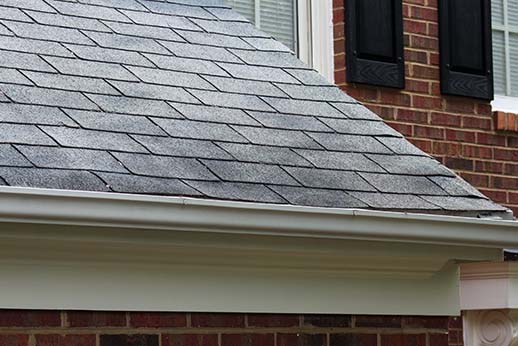
Curling & Worn Shingles
Rusty Flashing
If your flashing has been pressed up against a layer of snow all winter, it may have started to rust. The oxidization of flashing is dangerous for your roof, as it creates weak points where water can more easily enter. Flashing with a 90º bend in the bottom can be especially vulnerable, as water collects in the crease.
The harsh winter weather can cause other flashing problems, too. Heavy snowfall and wind can put pressure on your flashing, and the constant freezing-and-thawing of winter can weaken its attachments. These factors combined often cause flashing to peel away from the roof, exposing vulnerable areas to water and debris.
It’s easiest to check for this sort of flashing damage in the spring, when all the snow has melted. Flashing that has pulled away from your roof edge or chimney is quite easy to spot from the ground. Look for metal sheeting that is clearly detached from around your chimney, skylights, or the roof edge. Rusted or corroded flashing is harder to spot, and may require a professional inspection.
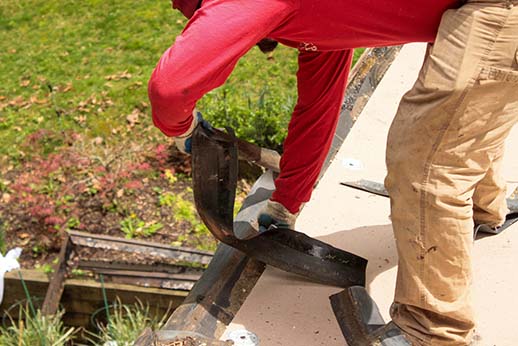
Rusty Flashing Removal
Spring-time Roofing Problems – The Bottom Line
Winter weather can be hard on roofing systems of all kinds. Luckily, early spring provides an excellent chance for homeowners to get out ahead of any unnoticed damage that the cold may have caused. The most vulnerable areas are seals, flashing, and other seams. However, shingles and other exposed layers should also be thoroughly checked for signs of wear and tear resulting from snow and moisture. It’s recommended that homeowners get a professional roof inspection at least twice per year. Ring in spring the right way with a professional roof inspection to ensure your roof is up to standard!
Author: Wilden McIntosh-Round

